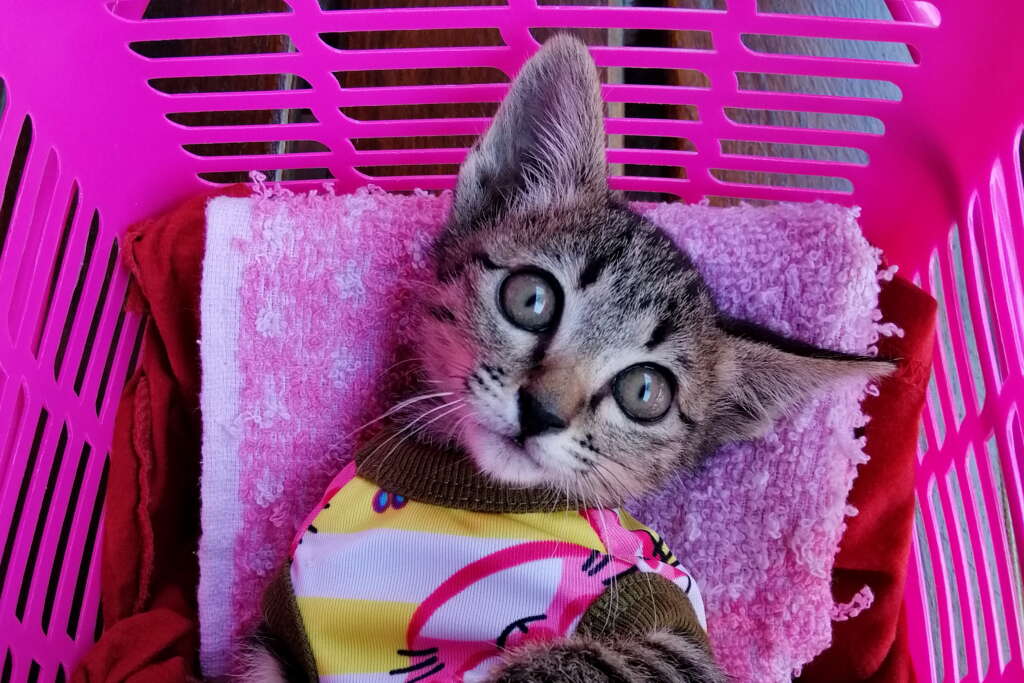Share This Article
Many think cats are hard to train, but they actually love a good challenge. Can you teach cats basic commands like dogs? Cats are smart and can learn, showing us a new way to connect with them through cat behavior training.
Learning how to train a cat is easier than you think. With clicker training, hand signals, and voice cues, it becomes fun. Your cat can learn to do things like ‘sit’, ‘stay’, or ‘come’ in just 15 minutes. Cat training basics tell us cats have short attention spans, so keep it short and engaging.
Treat training is a great way to improve obedience and understand your cat better. Every cat likes different treats, so find out what yours loves. This can make training a fun game for your cat, whether they’re a Siamese or a Burmese.
Training your cat does more than teach them commands. It helps with carrier training, communication, and preventing bad habits. This process is good for both you and your cat, improving your bond and their health.
As we go through this guide, remember to be consistent and use positive reinforcement. Discovering your cat’s hidden talents is exciting. This journey makes playtime structured and fun, building a strong bond with your cat.
The Importance of Training Your Cat
Some might think training your cat isn’t important, but it’s key for their happiness and your relationship. Regular cat obedience training and basic cat training techniques fight boredom. They also stop bad habits like destruction and weight gain, which can cause health problems like depression.
Using small treats and short, focused training sessions works well for cats. They have short attention spans. Positive reinforcement is key in cat training. It rewards good behavior without the harm caused by punishment.
Optimal training involves consistency in rewards and cues, enhancing clarity and effectiveness.
Regular training your cat boosts their problem-solving skills and activity levels. This makes them mentally and physically stronger. It also strengthens your bond with your cat, turning frustration into a positive interaction.
Getting family members involved in training helps make commands clearer and more consistent. It ensures your cat learns from everyone. This helps solve any behavioral issues and makes cat obedience training more effective.
Training is more than just teaching tricks. It’s a key part of caring for your pet. It makes life better for both the cat and its owner. So, learning and using basic cat training techniques is crucial for living together well.
Preparing for Your Cat Training Sessions
Getting ready for cat training basics is more than just getting tools. It’s about making a good learning space for you and your cat. You need to prepare well and have a plan, including the right tools and achievable goals for beginners and experts.

First, gather important items like a clicker, a target stick, and treats. These are key for teaching step-by-step cat commands. The clicker is vital for quickly and rewarding good behavior.
Choose a quiet spot for training where your cat feels secure and isn’t distracted. Training should be short, lasting 3-5 minutes, to keep your cat interested and avoid getting tired.
It’s important to know that each cat likes different rewards. Some cats like treats, while others prefer toys or affection. Tailor your training to what your cat likes best to make it easier and strengthen your bond.
Think about joining groups like Cat School for support and advice. These communities offer a place to share tips and learn from others. You’ll find resources and encouragement from other cat owners who are training their pets.
Set your training goals based on what your cat can do naturally. Start with simple commands like ‘sit’ or ‘stay’ before moving on to harder ones. This makes training structured and fun for your cat.
By carefully preparing for your cat training sessions, you’re setting up for success. This ensures a positive experience for both you and your cat, leading to better communication and a stronger bond.
Teach Cat Basic Commands: Getting Started with Simple Skills
Starting cat obedience training is like building a strong foundation. It’s important to know how cats think and act. Cats are more like independent teenagers than dogs, which are like toddlers. So, training them needs a special approach.
To teach your cat basic commands, start with simple tasks. Using tools like the Cat School Clicker Training Kit helps a lot. This kit has a clicker, target stick, and treats. It’s a great way to begin training your cat.
Training should be short and consistent. Sessions should be under five minutes to keep your cat interested. It’s best to train in a quiet place without distractions.
Give rewards right away and consistently to encourage good behavior. This makes training fun and successful.
Research shows that cats do not respond to discipline. They like positive reinforcement. Find out what motivates your cat, like treats or praise. This helps you communicate better and strengthens your bond.
Starting with the right mindset and tools is key to successful training. Make training fun and rewarding. Avoid punishment to keep your cat eager to learn. Training not only teaches skills but also deepens your bond with your cat.
Mastering the Essentials: Sit, Stay, and Come
Starting basic cat training techniques is more than just teaching new skills. It’s about building a stronger bond and keeping your cat safe. Learning commands like ‘Sit,’ ‘Stay,’ and ‘Come’ is key. These commands help manage your cat’s instincts and keep them safe.
The ‘Sit’ command is a basic but important skill. You can teach it using treats and clickers. The ‘Stay’ command keeps your cat safe by stopping them from running into danger. It’s useful in many situations, like when crossing the street or at the vet.
The ‘Come’ command is vital for calling your cat back in emergencies. It helps them come to you quickly when it’s important. Use a consistent tone and clear cues to teach these commands.

Train your cat when they’re most alert, like after a nap or before meals. This makes training more effective. Remember, consistency and patience are key. Training with all household members helps make the commands clear to your cat.
Every cat is different, so be patient and positive. With time, your cat will learn and grow. Mastering these commands makes your cat safer and more connected to your home.
Step-by-Step Cat Commands for Fun and Function
Teaching your cat basic commands can make your bond stronger and improve your pet’s life. These step-by-step cat commands use your cat’s natural behaviors for easier learning. They make training fun and useful.
Start with simple commands like “sit” or “come.” These teach obedience and are useful every day. Use positive methods like clicker training or treats to reward your cat. This makes learning fun and effective.
Train at times when your cat is most motivated, like before meals. This uses their natural hunt-catch-eat cycle for better training. It’s important to train often but keep sessions short. This keeps your cat interested and helps them learn without feeling overwhelmed.
Try teaching fun commands like “high five” or “spin.” These commands are entertaining and keep your cat’s mind active. They help prevent bad behaviors like scratching or spraying. Every cat learns differently, so adjust training to what works best for them.
By training this way, you help your cat’s physical and emotional health. Your home becomes happier and more peaceful. Training for obedience or fun tricks works best when you understand your cat’s nature and how they communicate.
Consistency Is Key: Repeating and Reinforcing Training
Consistency is key in basic cat training. It makes training a regular part of their life. This helps them learn and remember better. It’s important for keeping and improving their skills.
Clicker training is a popular way to train cats. It uses positive reinforcement. You click a clicker to say “good job” and then give a treat. Cats focus better in short sessions, especially before meals.

Use different rewards to keep training interesting. Some cats like treats, while others enjoy play or praise. Adding puzzle toys and target sticks makes training fun.
Everyone in the house should use the same training cues and rewards. This avoids confusing your cat. The aim is to make training a fun part of their day.
Choose the right tools for training, like clickers and toys. Make sure the treats you use are tasty. This keeps your cat motivated to learn.
In conclusion, repeating basic cat training makes them smarter and more confident. It helps them understand and follow commands better.
Addressing Common Cat Behavior Challenges
Learning cat behavior training is key to teaching new tricks and commands. It’s also about solving common issues like countertop jumping, uncontrolled scratching, or too much meowing. These behaviors often show a cat’s needs or stress, making it important to train with care.
Did you know that about 10 percent of cats have litter box problems? This is often because their litter box is dirty or they’re stressed. Keeping the litter box clean and quiet can help solve this issue. It shows how important it is to train and accommodate your cat’s needs.
Constant meowing can seem small but means a cat has a big issue. It could be health problems like fleas or injuries, or they just want attention. Understanding these signals and responding to them is crucial.
Using tools like clicker training can help teach cats new behaviors. For example, if a cat scratches furniture, giving them a scratching post and rewards can redirect this behavior. This way, they learn to scratch in a better place.
Scents and deterrents can also help with training. Cats don’t like strong smells like citrus or eucalyptus. These can keep them away from certain areas without stressing them out. But, always make sure they have other options to satisfy their curiosity.
Being consistent is key when training cats. Training should be short, positive, and rewarding. This makes training more effective and strengthens your bond with your cat, leading to a happier home.
Training a cat takes patience, consistency, and understanding. By addressing each cat’s unique challenges, you can ensure a happy and well-adjusted pet.
Expanding Your Cat’s Training: The Next Steps
Once you and your cat have mastered the basics, it’s time to expand their skills. Advanced training opens new doors and strengthens your bond. It boosts their mental stimulation and satisfies their natural instincts.
Training keeps them active and sharp, preventing issues like destructiveness, weight gain, or depression. Short training sessions of 3-5 minutes can make a big difference. They help keep your cat focused and prevent boredom, which can lead to health problems.
Consider leash training for outdoor adventures or improving their social skills with other pets and people. Consistency and positive reinforcement are key when teaching new skills. Rewarding your cat with a click and their favorite treat makes learning fun and effective.
Find out what treats your cat likes best. Tools like the Cat School Clicker Training Kit can help structure your training sessions. It includes a clicker, target stick, and training guide.
Being consistent with voice commands and hand signals is crucial for clear communication and progress. Timing your sessions well can lead to better engagement and results. It’s important to involve all household members in training to ensure consistency and improve social skills.
Training should evolve to keep your cat engaged and happy. Teaching them complex tricks or improving their emotional well-being can be rewarding. The goal is to keep them in a state of pleasure and relief, making training successful and enjoyable.


